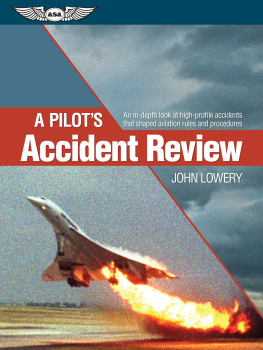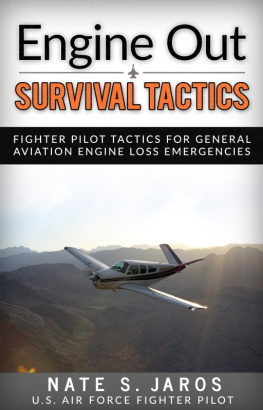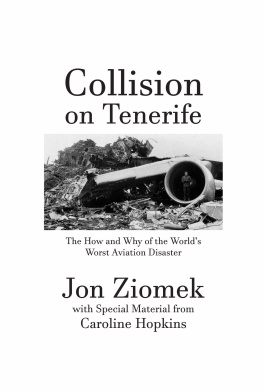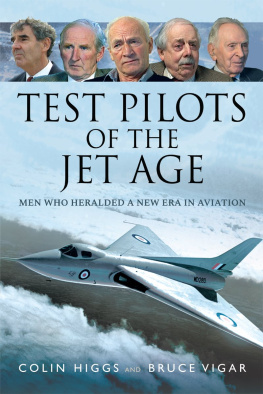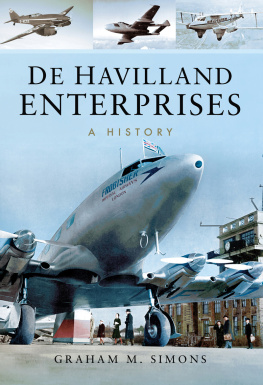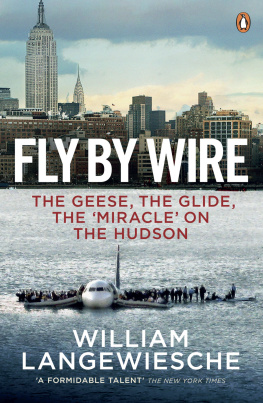AIR CRASHES
and
MIRACLE LANDINGS
Sixty Narratives
(How, When And Most Importantly Why)
by
Christopher Bartlett
Copyright 2010, 2011, 2012 & 2013 Christopher Bartlett
All Rights Reserved
ISBN 978-0-9560723-2-0
First Published April 12, 2010
Reprinted with Revisions and UpdatesSeptember, 2012
and March 17, 2013 (for AF447)
by
OpenHatch Books, London, UK
openhatchbooks.com
chrisbart.com
Front coverphoto
by
Florian Trojer (jetvisuals.com)
depicting a routine & safe flight departure
from Innsbruck Airport, Austria,
in accordance with published procedures
For
all those who died
and
all those who survived.
Lessons
were learnt
for the benefit
of us all.
The Author
ChristopherBartlett initially trained as a mining engineer,a field where ensuring compliance with safety standards is of prime importance.His passion, however, has been flying, and notably air safety.
This was engendered as anAir Cadet during his youth, and as a member of the British InterplanetarySociety, as well as in the course of sessions on fighter simulators at the AirMinistry. He completed his two years military service in the British Royal AirForce.
After taking a degree inModern Chinese and Japanese at the School of Oriental and African Studies,London University, he became, amongst other things, a professional translatorof Japanese scientific and technical material. This included Japanese rockettests. He also wrote for magazines in the Far East.
His fluency andunderstanding of English, French, and Japanese enabled him to undertakeresearch based on material published in its original format and note opinionsand facts that were not widely publicized. In addition, his coincidentalresidence in countries when and where headline air crashes occurred has enabledhim to add local color and extra details to a number of these accounts.
CONTENTS
In Kindle version, CLICK ON ITEM.
ENDNOTES:
clicking on the endnote number takes one directly to it.
(After reading the endnote, clickon back, or the number to go back to that point in the narrative.Incidentally, using this feature, one can find the endnotes very informative intheir own right, clicking on the ones of particular interest to see to whatthey refer.)
Figures
Illustrations and diagrams are only includedwhere needed for explanation.
Figure 1 2,556-mile leg from Lae, Papua New Guinea, to Howland
Figure 2 The DHL 757 almostentirely passes under the TU-154
Figure 3 Normal clockwise route blocked by parked a/c
Figure 4 Route followed by SQ006
Figure 5 The Cessna should havetaxied north via R5 not via R6
Figure 6 Left wing stalls and drops
Figure 7 Kegworth impact sequence
Figure 8 Routes taken by the fourhijacked aircraft
To view images in color and detail,see
DIAGRAMS & PHOTOS FOR KINDLE
READERS + LINKS FOR ALL READERS
on our website chrisbart.com
PREFACE
While covering the technicalaspects of the various incidents described, and sometimes reading like adetective story, the book highlights the human factors, which relate not onlyto aviation but also to many other facets of our daily lives. Readers should findreassurance in the fact that many of the incidents occurred a long time ago andprovided the lessons that have made flying so much safer today.
The intention was to explain notonly how and why those accidents occurred, but also to increase the readersinterest in the underlying causes of accidents in general. While the book attimes suggests possible causes not emphasized or cited in the official reports,sufficient facts have been included for the reader to draw his or her ownconclusions, which of course may differ from those of the author.
In the haste to publish aftersome five years research, and with the book continuously evolving (improving)after the initial proofreading, there were unfortunately grammatical andtypographical errors in the first edition. We have therefore thoroughly proofread*this updated version after adding inter alia an account of the Colgan Airdisaster and the latest (as of March 15, 2013) available information regarding theloss of Air France AF447 with its many lessons for todays pilots lulled byautomation. We have also revised some tongue-in-cheek comments suggesting someheroes benefited from circumstances, which regrettably some readersmisinterpreted to the extent of taking offense.
As it was not possible to consultall the individuals and organizations cited, the book may have unwittinglyportrayed a few unfairly. That said, mention of a given airline, organizationor individual may simply reflect their integrity and transparency.
Finally, as this quite a long complex book, the printed version is perhaps more appropriate than the Kindle one. However, besides being cheaper and more easily available, the Kindle version is very good, as one reviewer said, for 'dipping into,' thanks in part to the detailed Table of Contents. Another Kindle reviewer appreciated 'the large format illustrations the author provides on his web site [chrisbart.com].'
* The US spellings andgrammar still seemed incorrect to one UK reviewer.
Interestingly, the USconvention of placing of the full stop (period) inside the inverted comma (quote)originated because it tended to get lost in the course of manual typesetting.
Christopher Bartlett
ACKNOWLEDGEMENTS
Many official reports, excellent articles,and booksnot to mention films of varying accuracyhave contributed to thisbooks realization. Twenty thousand or more items available on the Internetprovided background knowledge. In addition, I am sometimes citing from memory adetail or point made in now irretrievable coverage in the local media in thecountries where the incidents occurred and I happened to be at the time.
Though it may seem ghoulish,reviewing Cockpit Voice Recorder (CVR) transcriptions included in officialreports often seemed to give a real feel to what was happening in the cockpit,and a good idea of the cascading dilemmas facing the pilots.
I wasted much time, withoutcoming to definitive conclusions, in some cases where official reports werecontested as conspiratorial, as can happen when all partiesairline,manufacturer and investigating authority, and even victimsare from the samecountry. Once someone claims officials have tampered with evidence, have shreddedit, and are lying to boot, there is no definitive answer. From a safety pointof view, this may not matter overly as the conspirators, if any, know the truth,and stealthily, but eventually, take remedial measures.
In preparing the material, I wasfortunate to come across AirDisaster by the Australian, Macarthur Job , reviewing in several volumes the most notable jet-age airlinerdisasters up to 1994. Job succeeds in putting them in perspective with a wealthof technical and human detail. Those captivating volumes would be a goodstarting point for anyone wishing to read about a number of the pre-1995accidents in much more detail than is possible here.
Similarly , Disasters in The AirThe Truth aboutMysterious Air Disasters by JanBartelski was of great value in making me look again atthe assumptions that had generally been made regarding some notoriousdisasters, and notably the worst ever multi-aircraft disaster in which two 747jumbos collided on the ground in fog at Tenerife in 1977.
Some of the episodes of theexcellent TV series entitled AirCrash Investigation also called MAYDAY in some countriesbroadcast on the National Geographic Channel , yielded some useful new insights when the author was half-waythrough this book. Besides bringing events to life much as he has tried to dohere, the highly successful series has aroused the interest of many. Theproducers obviously devoted considerable effort, and not least money, tointerviewing passengers in addition to aircrew, investigators, and experts.





